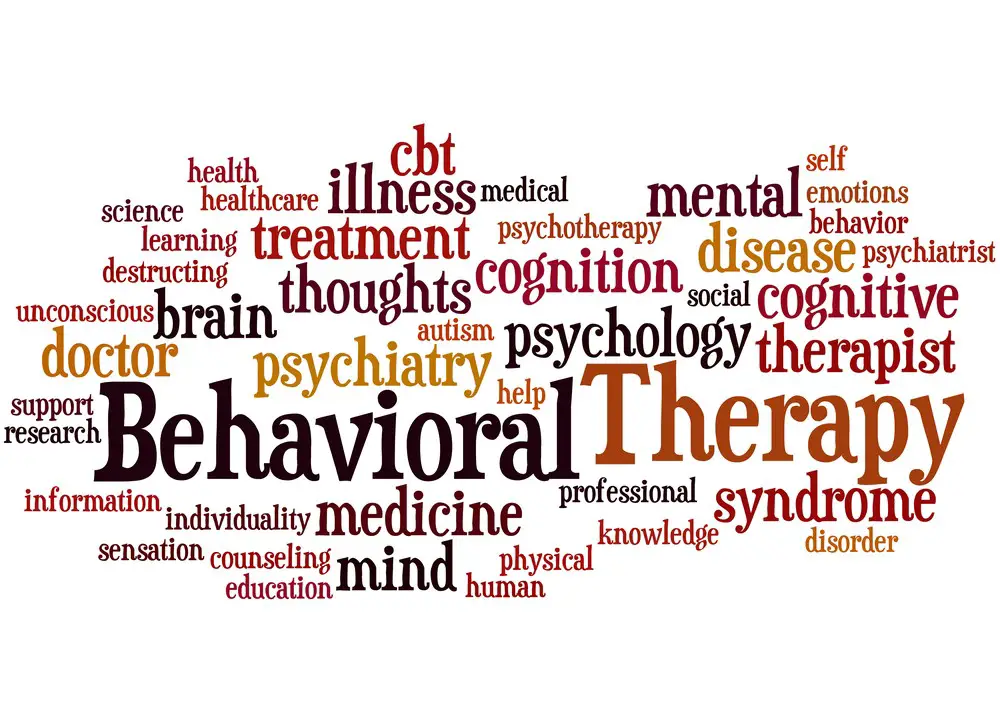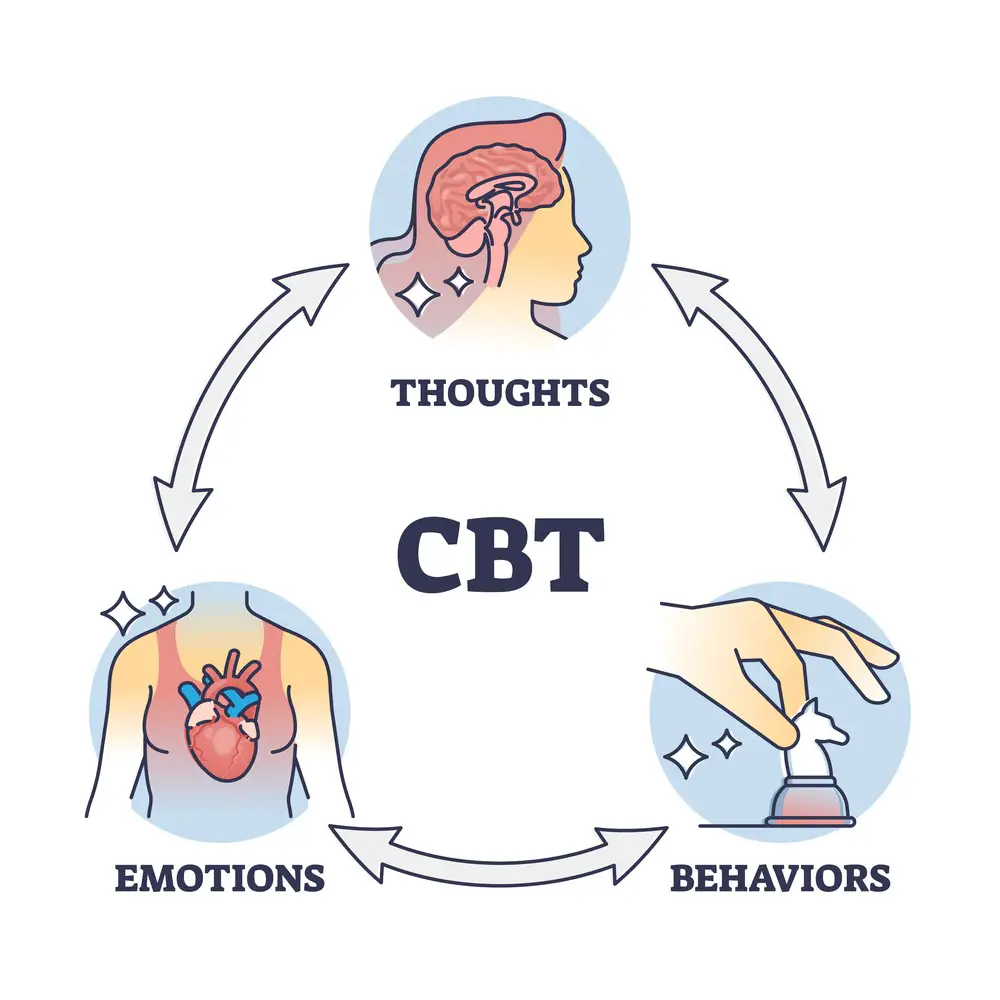As a BetterHelp affiliate, we receive compensation from BetterHelp if you purchase products or services through the links provided
Behavior therapy and psychoanalysis have emerged as two distinct approaches to mental health treatments. While both methods aim to help individuals overcome mental and emotional issues, they differ significantly in their underlying philosophies, techniques, and goals.
Behavior therapy, often rooted in concepts from behaviorism, focuses on modifying maladaptive behaviors through techniques such as systematic desensitization, reinforcement, and exposure therapy. This approach believes that behavior can be shaped and changed by altering its environmental stimuli and associated consequences. On the other hand, psychoanalysis, established by Sigmund Freud, delves deep into the human psyche to uncover hidden thoughts, feelings, and desires that may be causing distress in an individual’s life.
The juxtaposition between these two therapeutic approaches can be seen in various aspects: behavior therapy prioritizes observable behaviors and tangible outcomes, while psychoanalysis emphasizes the exploration of the unconscious mind and the interpretation of symbolic contents. This critical comparison provides a clearer understanding of their differences and allows individuals to decide on the type of therapy that best suits their needs.
Behavior Therapy Vs. Psychoanalysis
Behavior therapy and psychoanalysis are two distinct approaches to mental health treatment, each with its foundations, methodologies, and applications. This section will discuss the basic principles of behavior therapy and psychoanalysis to understand the differences between these psychological approaches.
Foundations of Behavior Therapy

Behavior therapy, also known as behavioral therapy, is a psychological approach that focuses on modifying maladaptive behaviors through learning principles, such as classical conditioning and operant conditioning. This therapy addresses issues like obsessive-compulsive disorder, phobias, anxiety, and addiction.
The primary goal of behavior therapy is to help individuals replace destructive patterns with healthy ones. Some techniques employed in behavior therapy are systematic desensitization, exposure therapy, and reinforcement schedules. Rather than probing into the unconscious mind, behavioral therapy emphasizes observable and quantifiable behaviors.
Foundations of Psychoanalysis
On the other hand, psychoanalysis is a therapeutic approach that Sigmund Freud originated. Centered around the belief that unconscious processes and unresolved conflicts influence an individual’s thoughts, feelings, and behaviors, psychoanalysis delves into the deeper layers of the human psyche.
Psychoanalytic therapy aims to bring these unconscious issues into the conscious mind, allowing patients to gain insights into their unresolved problems and develop healthier coping patterns. Fundamental techniques used in psychoanalysis include free association, dream analysis, and examination of transference.
While both behavior therapy and psychoanalysis aim to improve mental health and well-being, their fundamental principles and methods vary significantly. Behavior therapy is focused on modifying observable behaviors, utilizing principles of learning and conditioning. Psychoanalysis, conversely, delves into the unconscious mind, exploring unresolved conflicts and unconscious processes that influence an individual’s mental health.
Key Theories and Techniques
Classical Conditioning and Operant Conditioning
Classical conditioning, a technique based on the work of Ivan Pavlov, refers to learning through the association of a neutral stimulus with a significant stimulus. This type of learning occurs when a conditioned stimulus is paired with an unconditioned stimulus, producing a conditioned response.
For example, Pavlov’s famous experiment involved pairing the sound of a bell (the conditioned stimulus) with the presentation of food (the unconditioned stimulus) to a dog. Eventually, the dog would salivate (the conditioned response) at the sound of the bell, even if no food was present.
Operant conditioning, developed by Edward Thorndike, focuses on the relationship between actions and consequences. This approach suggests that learning occurs as individuals respond to rewards and punishments in their environment.
There are two main components of operant conditioning:
- Positive reinforcement: adding something desirable to increase the likelihood of a behavior being repeated, such as praise or a treat
- Negative reinforcement: removing something undesirable to increase the likelihood of a behavior being repeated, such as stopping an annoying sound after a desired action is taken
Free Association and Dream Analysis
Free association is a psychoanalytic technique in which individuals express their thoughts and feelings as they come to mind without censoring or organizing them. This method aims to uncover unconscious thoughts and emotions influencing behavior.
In a free association exercise, the therapist might ask the client to share whatever comes into their mind, even if the thoughts seem unrelated or insignificant. The therapist then listens for themes, patterns, or revealing comments that can provide insight into the individual’s underlying psychological conflicts.
Dream analysis involves examining the content and symbolism of an individual’s dreams to uncover unconscious desires, fears, and conflicts. This technique, often used in psychoanalysis, is based on the idea that dreams reflect a person’s innermost thoughts and feelings that may not be easily accessible through conscious awareness.
During dream analysis, the therapist encourages the client to describe their dreams in detail, exploring the emotions, images, and scenarios in the dream. The therapist then helps the individual interpret the possible meanings of these dream elements, often relating them to their life experiences and current situations.
Treatment Goals and Focus
Behavior Change in Behavior Therapy

Behavior therapy aims to systematically change maladaptive behaviors associated with anxiety, depression, and obsessive-compulsive disorder. One popular approach in behavior therapy is cognitive behavioral therapy (CBT), which focuses on identifying and modifying negative patterns of thinking and behavior.
Techniques such as aversion therapy and systematic desensitization are often employed to help individuals confront their fears, modify their responses to specific triggers or emotions, and replace maladaptive behaviors with healthier ones. In the case of systematic desensitization, for example, the individual is slowly exposed to the feared stimuli, allowing them to build tolerance and reduce anxiety over time.
Another technique used in behavior therapy is flooding, where an individual is exposed to an anxiety-provoking stimulus for a prolonged period without the opportunity to escape. This facilitates the extinction of the fear response and helps clients learn to tolerate unpleasant stimuli.
Unconscious Desires and Conflicts in Psychoanalysis
Psychoanalysis, on the other hand, delves deep into the unconscious mind and focuses on resolving repressed memories and unconscious thoughts. Psychoanalysis aims to help individuals gain insight into their past traumas, desires, and defense mechanisms, ultimately leading to a better understanding of their personality and emotional patterns.
An essential aspect of psychoanalysis is the interpretation of dreams, which are believed to contain symbolic representations of unconscious desires and conflicts. The therapist works to uncover the hidden meanings behind these symbols, helping clients gain insight into their unconscious minds.
Another component of psychoanalysis is the exploration of defense mechanisms, which are unconscious strategies individuals use to protect themselves from unpleasant emotions and anxiety. By identifying and working through these defense mechanisms, clients can better understand the origins of their emotional difficulties and work towards resolving them.
Unlike behavior therapy, psychoanalysis may focus less on directly altering specific behaviors or symptoms. Instead, it emphasizes the exploration of the unconscious mind and its impact on the conscious mind, aiming for deeper self-awareness and personal growth.
Treatment of Specific Mental Health Conditions
This section will explore how behavior therapy and psychoanalysis differ in treating various mental health conditions, including anxiety disorders and phobias, depression, and bipolar disorder, eating disorders and substance abuse, and personality disorders and schizophrenia.
Anxiety Disorders and Phobias
Behavior therapy often focuses on exposure techniques, such as systematic desensitization, to help individuals gradually confront and reduce their fears. Psychoanalysis, however, seeks to uncover the unconscious conflicts and memories related to anxiety or phobia. In behavior therapy, modifying the individual’s response to anxiety-provoking situations is usually prioritized, whereas psychoanalysis emphasizes understanding the root cause of the fear.
Depression and Bipolar Disorder
For depression and bipolar disorder, behavior therapy often involves teaching coping strategies, developing a routine, and engaging in activities that promote positive emotions. Psychoanalysis addresses unresolved emotional issues and unconscious conflicts that might contribute to depressive or manic symptoms. While both approaches can be helpful, behavior therapy may be more action-focused and goal-oriented, whereas psychoanalysis might prioritize emotional insight and self-reflection.
Eating Disorders and Substance Abuse
Behavior therapy often centers on identifying and altering unhealthy behavioral patterns in treating eating disorders and substance abuse. Techniques like cognitive restructuring, behavioral activation, and skills training are commonly used to help individuals replace problematic coping mechanisms with healthier alternatives. Psychoanalysis tends to delve into the unconscious motivations and unresolved emotional conflicts that may contribute to the development and maintenance of these disorders.
Personality Disorders and Schizophrenia
For personality disorders, behavior therapy typically focuses on building interpersonal and problem-solving skills, regulating emotions, and fostering insight into unhealthy thought and behavior patterns. Psychoanalysis may involve exploring unconscious processes, attachment patterns, and early life experiences that have shaped the development of the personality disorder. In the case of schizophrenia, behavior therapy may emphasize social skills training, stress management, and symptom management. In contrast, psychoanalysis might not be as effective due to the nature of the disorder.
As demonstrated, behavior therapy and psychoanalysis differ in their approaches and techniques when treating specific mental health conditions. By understanding these differences, individuals and mental health professionals can better identify which approach may be better suited to a particular individual’s needs and preferences.
Effectiveness and Outcomes
When discussing the distinct approaches of behavior therapy and psychoanalysis, we must consider the differences in effectiveness and outcomes. We’ll look more closely at the efficacy of each therapeutic method by comparing their techniques and results in treating various conditions.
Comparing the Efficacy of Behavior Therapy and Psychoanalysis
Behavior therapy, rooted in the principles of behaviorism, primarily focuses on changing problematic behaviors through techniques such as conditioning therapy, extinction, and shaping. This approach has proven to be particularly effective in addressing unhealthy behaviors, both positive and negative, and fostering more desirable outcomes.
One example is dialectical behavioral therapy (DBT), an offshoot of behavior therapy that targets many complex mental health conditions. By addressing current behaviors, DBT aims to provide skills and coping mechanisms for individuals, facilitating improved short-term outcomes.
In contrast, psychoanalysis discovers deep-rooted psychological issues that drive one’s behavior. Its techniques revolve around the exploration of unconscious motives and past experiences. While this approach can offer valuable insights, it requires longer for patients to see tangible improvements.
Let’s look at some key factors when comparing the efficacy of both approaches:
- Short-term outcomes: Behavior therapy is generally more time-efficient, offering faster results in changing unhealthy behaviors.
- Long-term outcomes: Both methods can be effective in the long run, depending on the individual’s needs and the therapist’s expertise.
- Effectiveness with complex conditions: Behavior therapy, particularly DBT, has shown promising results in treating complex mental health conditions.
- Client preference: Behavior therapy and psychoanalysis may ultimately depend on the individual’s preference and the issues being addressed.
In conclusion, behavior therapy and psychoanalysis offer different therapeutic techniques and outcomes in treating various conditions. While behavior therapy may yield faster results in changing problematic behaviors and be more effective in treating complex conditions, psychoanalysis provides a deeper understanding of the individual’s unconscious motives. Choosing the appropriate approach primarily depends on the individual’s needs, preferences, and goals for their mental health journey.

Frequently Asked Questions
Many people have questions about the differences between behavior therapy and psychoanalysis. To help clarify these differences, we have compiled a list of frequently asked questions below:
| Question | Behavior Therapy | Psychoanalysis |
|---|---|---|
| What is the primary focus? | Changing unhealthy or undesirable behaviors through conditioning and reinforcement | Uncovering unconscious thoughts, feelings, and desires that influence behavior |
| What are the main techniques used? | Systematic desensitization, exposure therapy, and operant conditioning | Free association, dream analysis, and transference |
| How long does treatment typically last? | Shorter duration, often lasting several weeks to several months | Longer duration, often lasting several months to several years |
| What is the therapist’s role? | Active and directive, teaching skills and providing guidance | Passive and non-directive, allowing the patient to explore their unconscious mind |
Here are some additional points to consider:
- Behavior therapy focuses more on present behaviors and their triggers, whereas psychoanalysis delves deeper into the patient’s past experiences and unconscious processes.
- Behavior therapy can be used as a standalone treatment or in conjunction with other therapies, while psychoanalysis often requires a long-term commitment to the therapeutic process.
- Both approaches have their merits and can be effective for different mental health issues, depending on the individual’s specific needs and circumstances.
Patients must discuss their concerns and goals with their therapist to determine the best approach for their situation.
About Jacob Maslow
After surviving the traumatizing events of 9/11, I took it upon myself to heal through helping others. I’m the primary caregiver of my children and understand from first-hand experience the lonely paths you have to walk as a partner and parent when leaving an unhealthy relationship.
We’re all echoing in a dark space that doesn’t have to be this empty, and that’s been my mission since finding solace and recovery in therapy: To help comfort others who are still in shock and at the prime of their struggle.
I came across BetterHelp after searching for this type of community. I wanted to belong to a body of proactive therapists and supportive therapy veterans that allowed me to see other sides of the story.
It was unconventional, and that’s what attracted me most. During my most challenging times, when my ex-wife completely cut me off from my children, I found comfort and clarity through BetterHelp.
Instead of being chained to a strict therapist recommendation, I was in charge of who I felt understood my struggle most. That allowed me to find my true peace, as I was reunited with those who read behind my words and had first-hand experience with my trauma.
Recovery is a choice; with BetterHelp, that choice will be a few clicks away. You can join their couples-oriented platform, Regain.us for those stuck with family estrangement and toxic relationship patterns.
- 7 Ideas to Help You Relax and Unwind on a Family Vacation - April 27, 2025
- How Having Cybersecurity Protection Helps You Relax - April 25, 2025
- 8 Reasons Why Spending Time Outside Calms You Down - April 25, 2025
This site contains affiliate links to products. We will receive a commission for purchases made through these links.



